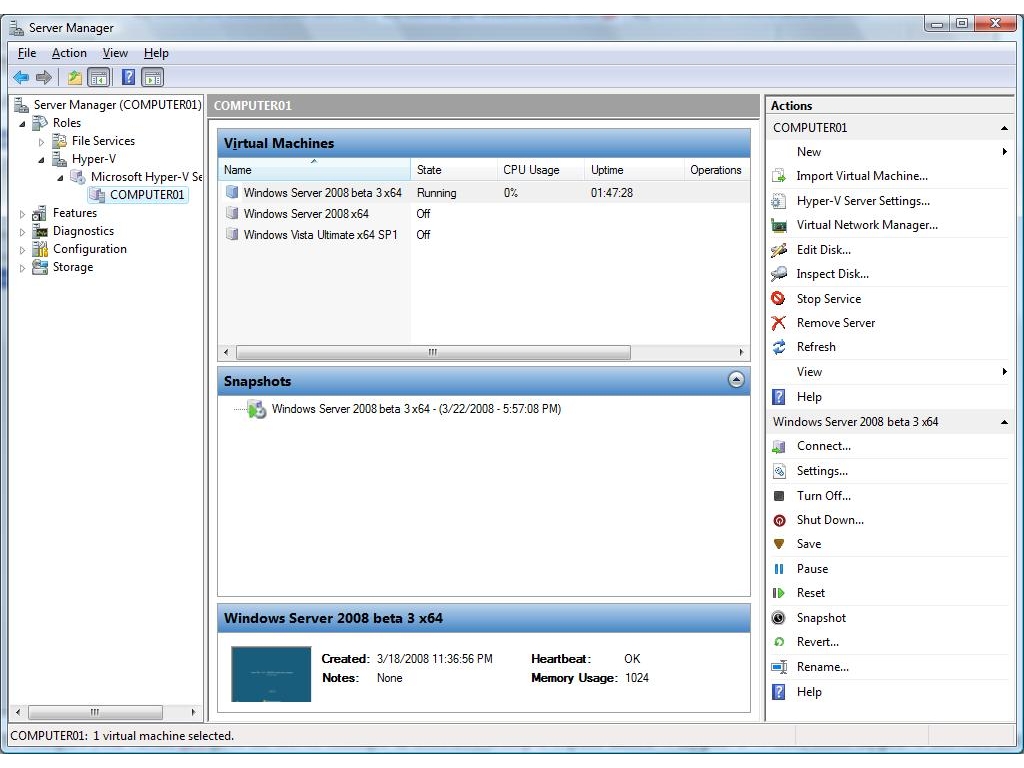You are here:
WindowsShareware.com > Microosft Hyper-VMicroosft Hyper-V
| Microosft Hyper-V | |||
|---|---|---|---|

|
Microsoft Hyper-V, codenamed Viridian and formerly known as Windows Server Virtualization, is a hypervisor-based virtualization system for x64 computers. A beta version of Hyper-V was shipped with certain x64 editions of Windows Server 2008, and the finalized version (automatically updated through Windows Update) was released on June 26th 2008. Hyper-V has since been released in a free stand-alone version, and has been upgraded to Release 2 (R2) status. Hyper-V supports isolation in terms of a partition. A partition is a logical unit of isolation, supported by the hypervisor, in which operating systems execute. A hypervisor instance has to have at least one parent partition, running Windows Server 2008. The virtualization stack runs in the parent partition and has direct access to the hardware devices. The parent partition then creates the child partitions which host the guest OSs. A parent partition creates child partitions using the hypercall API, which is the application programming interface exposed by Hyper-V. A virtualized partition does not have access to the physical processor, nor does it handle its real interrupts. Instead, it has a virtual view of the processor and runs in Guest Virtual Address, which (depending on the configuration of the hypervisor) might not necessarily be the entire virtual address space. A hypervisor could choose to expose only a subset of the processors to each partition. The hypervisor handles the interrupts to the processor, and redirects them to the respective partition using a logical Synthetic Interrupt Controller (SynIC). Hyper-V can hardware accelerate the address translation between various Guest Virtual Address-spaces by using an IOMMU (I/O Memory Management Unit) which operates independent of the memory management hardware used by the CPU. |
||
